| |||||
| Centuries: | |||||
|---|---|---|---|---|---|
| Decades: | |||||
| See also: | Other events of 1325 List of years in Ireland | ||||
Events from the year 1325 in Ireland include:
| |||||
| Centuries: | |||||
|---|---|---|---|---|---|
| Decades: | |||||
| See also: | Other events of 1325 List of years in Ireland | ||||
Events from the year 1325 in Ireland include:

Edward III, also known as Edward of Windsor before his accession, was King of England from January 1327 until his death in 1377. He is noted for his military success and for restoring royal authority after the disastrous and unorthodox reign of his father, Edward II. Edward III transformed the Kingdom of England into one of the most formidable military powers in Europe. His fifty-year reign is one of the longest in English history, and saw vital developments in legislation and government, in particular the evolution of the English Parliament, as well as the ravages of the Black Death. He outlived his eldest son, Edward the Black Prince, and was succeeded by his grandson, Richard II.

The Treaty of Brétigny was a treaty, drafted on 8 May 1360 and ratified on 24 October 1360, between Kings Edward III of England and John II of France. In retrospect, it is seen as having marked the end of the first phase of the Hundred Years' War (1337–1453) as well as the height of English power on the European continent.
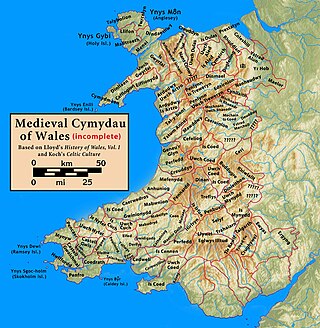
The Maelor is an area of north-east Wales along the border with England. It is now entirely part of Wrexham County Borough. The name Maelor is an old Welsh word: it can be translated as "land of the prince", from mael ("prince") and llawr.

Francis II was Duke of Brittany from 1458 to his death. He was the grandson of John IV, Duke of Brittany. A recurring theme in Francis' life would be his quest to maintain the quasi-independence of Brittany from France. As such, his reign was characterized by conflicts with King Louis XI of France and with his daughter, Anne of France, who served as regent during the minority of her brother, King Charles VIII. The armed and unarmed conflicts from 1465 to 1477 and 1484–1488 have been called the "War of the Public Weal" and the Mad War, respectively.

Edward Hirsch Levi was an American legal scholar and academic. He served as dean of the University of Chicago Law School from 1950 to 1962, president of the University of Chicago from 1968 to 1975, and then as United States Attorney General from 1975 to 1977 under President Gerald Ford. Levi is regularly cited as the "model of a modern attorney general", the "greatest lawyer of his time", and is credited with restoring order after Watergate. He is considered, along with Yale's Whitney Griswold, the greatest of postwar American university presidents.

Thomas of Brotherton, 1st Earl of Norfolk, was the fifth son of King Edward I of England (1239–1307), and the eldest child by his second wife, Margaret of France, the daughter of King Philip III of France. He was, therefore, a younger half-brother of King Edward II and a full brother of Edmund of Woodstock, 1st Earl of Kent. He occupied the office of Earl Marshal of England.
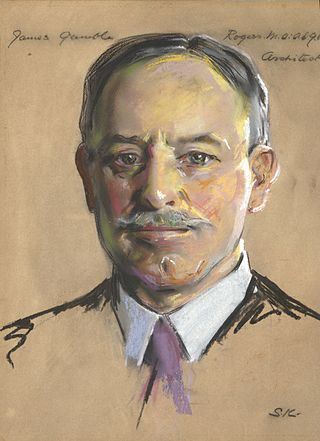
James Gamble Rogers was an American architect. A proponent of what came to be known as Collegiate Gothic architecture, he is best known for his academic commissions at Yale University, Columbia University, Northwestern University, and elsewhere.
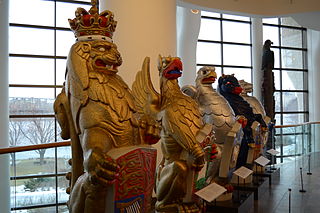
The Queen's Beasts are ten heraldic statues representing the genealogy of Queen Elizabeth II, depicted as the Royal supporters of England. They stood in front of the temporary western annexe to Westminster Abbey for the Queen's coronation in 1953. Each of the Queen's Beasts consists of a heraldic beast supporting a shield bearing a badge or arms of a family associated with the ancestry of Queen Elizabeth II. They were commissioned by the British Ministry of Works from the sculptor James Woodford, who was paid the sum of £2,750 for the work. They were uncoloured except for their shields at the coronation. They are now on display in the Canadian Museum of History in Gatineau, Quebec.
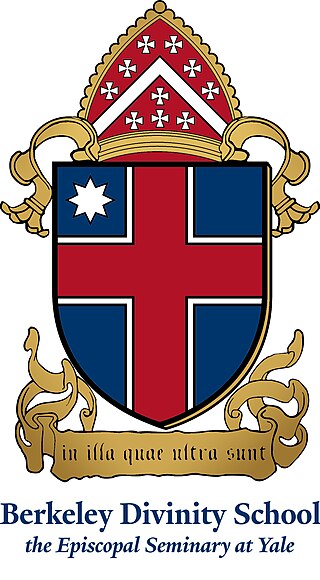
Berkeley Divinity School at Yale, founded in 1854, is a seminary of The Episcopal Church in New Haven, Connecticut. Along with Andover Newton Theological School and the Yale Institute of Sacred Music, Berkeley is one of the three "Partners on the Quad," which are part of Yale Divinity School at Yale University. Thus, Berkeley operates as a denominational seminary within an ecumenical divinity school. Berkeley has historically represented a Broad church orientation among Anglican seminaries in the country, and was the fourth independent seminary to be founded, after General Theological Seminary (1817), Virginia Theological Seminary (1823), and Nashotah House (1842). Berkeley's institutional antecedents began at Trinity College, Hartford in 1849. The institution was formally chartered in Middletown, Connecticut in 1854, moved to New Haven in 1928, and amalgamated with Yale in 1971.

Ferdinand, Prince of Asturias was a member of the House of Habsburg who was heir apparent to the Spanish throne.

Homage in the Middle Ages was the ceremony in which a feudal tenant or vassal pledged reverence and submission to his feudal lord, receiving in exchange the symbolic title to his new position (investiture). It was a symbolic acknowledgement to the lord that the vassal was, literally, his man (homme). The oath known as "fealty" implied lesser obligations than did "homage". Further, one could swear "fealty" to many different overlords with respect to different land holdings, but "homage" could only be performed to a single liege, as one could not be "his man" to more than one "liege lord".
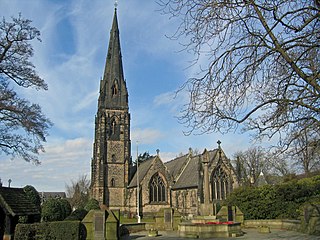
St Philip's Church is in the village of Alderley Edge, Cheshire, England. The church is recorded in the National Heritage List for England as a designated Grade II* listed building. It is an active Anglican parish church in the diocese of Chester, the archdeaconry of Macclesfield and the deanery of Knutsford. The architectural historian Nikolaus Pevsner described it as "large, ambitious, and unmistakably prosperous-looking".

St John the Evangelist's Church is in the small village of Byley, Cheshire, England. It is recorded in the National Heritage List for England as a designated Grade II listed building. It is an active Anglican parish church in the diocese of Chester, the archdeaconry of Chester and the deanery of Middlewich. Its benefice is combined with that of St Michael and All Angels, Middlewich. The architectural historian Nikolaus Pevsner regarded it as being "really very beautiful" with a "minimum of motifs, but a maximum of materials".
Edward Horton Hubbard was an English architectural historian who worked with Nikolaus Pevsner in compiling volumes of the Buildings of England. He also wrote the definitive biography of John Douglas, and played a part in the preservation of Albert Dock in Liverpool.

Over United Reformed Church is in Swanlow Lane, Over, Winsford, Cheshire, England. It was built as a Congregational chapel and is now a United Reformed Church. It is a Grade II listed building,

The Weardale campaign, part of the First War of Scottish Independence, occurred during July and August 1327 in Weardale, England. A Scottish force under James, Lord of Douglas, and the earls of Moray and Mar faced an English army commanded by Roger, Lord Mortimer of Wigmore, accompanied by the newly crowned Edward III.
Wilfred Lewis Warren was a historian of medieval England. Educated at Exeter College, Oxford, he worked as a professor of modern (post-classical) history and dean of theology at the Queen's University, Belfast. His field of interest was Norman and Angevin England, on which he published several major works. In 1956 he received a doctorate in 14th-century English church history. He was fascinated by and well versed in Ulster politics.
Jerrold Northrop Moore was an American-born British musicologist, best known for a biography and other writings on the life and music of Sir Edward Elgar. He was also an authority on the history of the gramophone.

The statue of Edward VI by Thomas Cartwright at St Thomas' Hospital, Lambeth, London is one of two statues of that king at the hospital. Both commemorate Edward's re-founding of the institution in 1551. The statue was designed by Nathaniel Hanwell and carved by Thomas Cartwright in 1682, during the rebuilding undertaken by Sir Robert Clayton when President of the hospital. The statue originally formed the centrepiece of a group of figures which adorned the gateway on Borough High Street. It was moved to its current location at the north entrance to the North Wing on Lambeth Palace Road in the 20th century. It was designated a Grade II* listed structure in 1979.

The statue of Edward VI by Peter Scheemakers at St Thomas' Hospital, Lambeth, London is one of two statues of the king at the hospital. Both commemorate Edward's re-founding of the hospital in 1551. It was moved to its current location inside the North Wing of the hospital in the 20th century. The sculpture was designated a Grade II* listed structure in 1979.